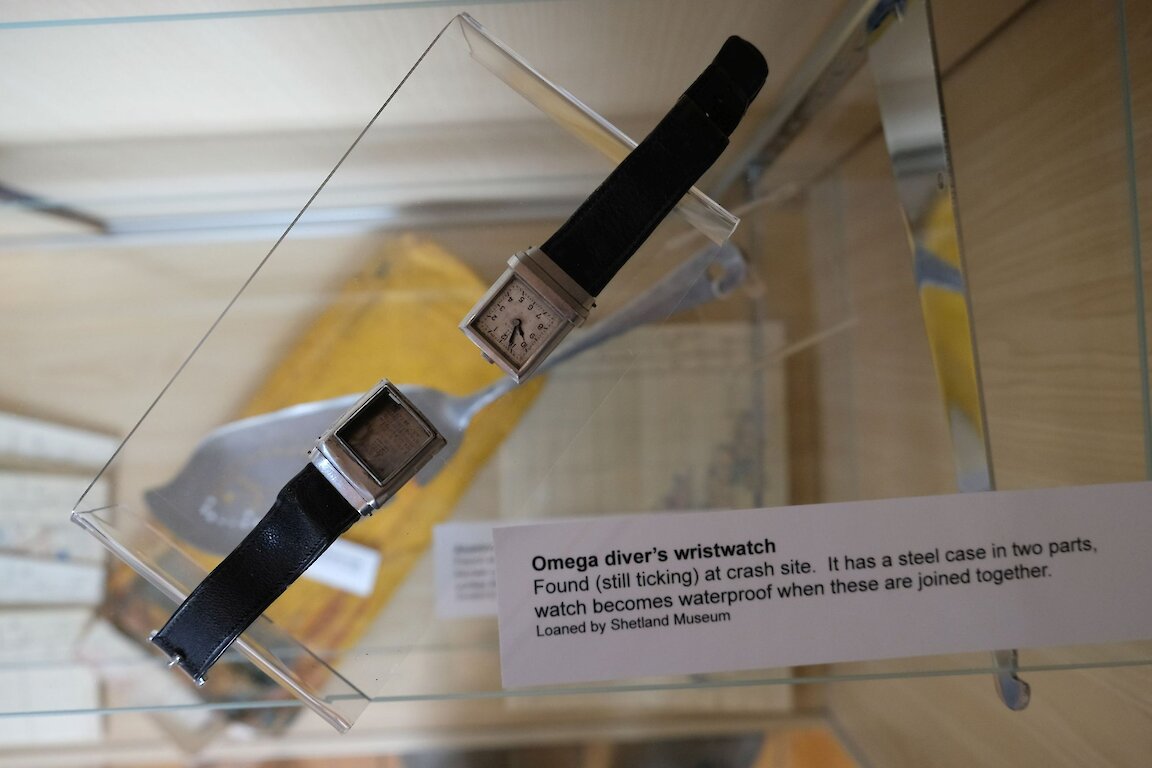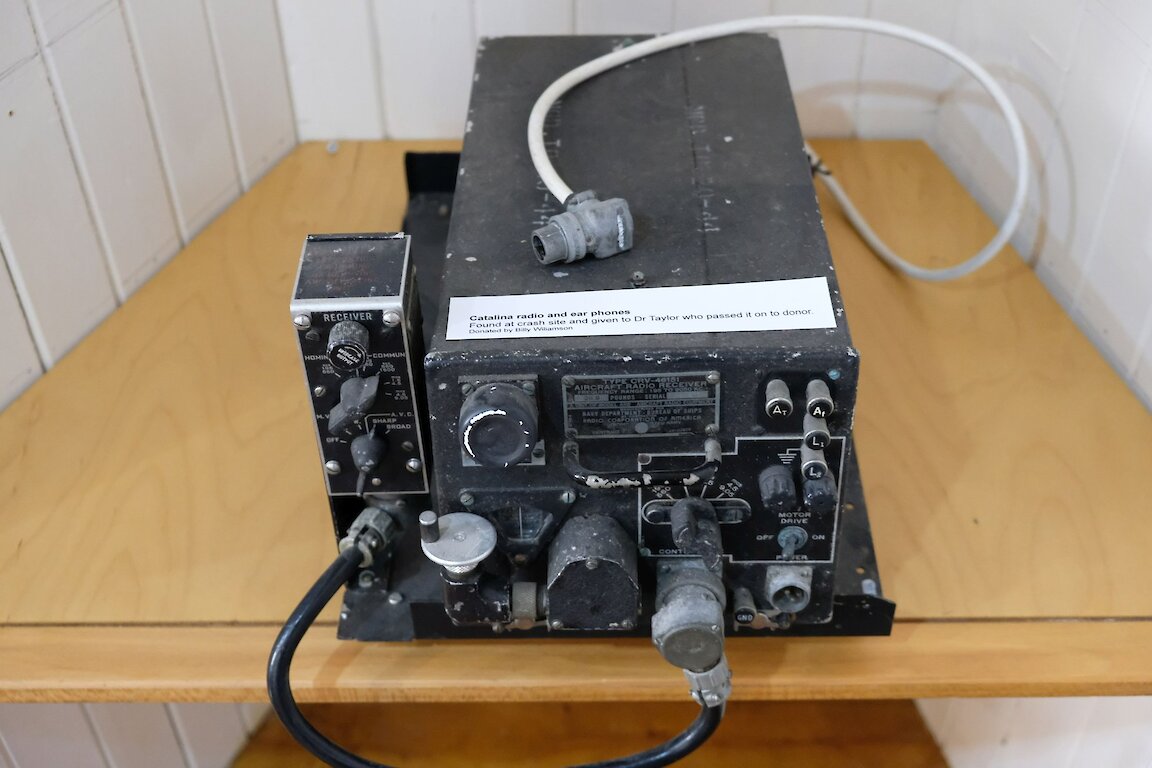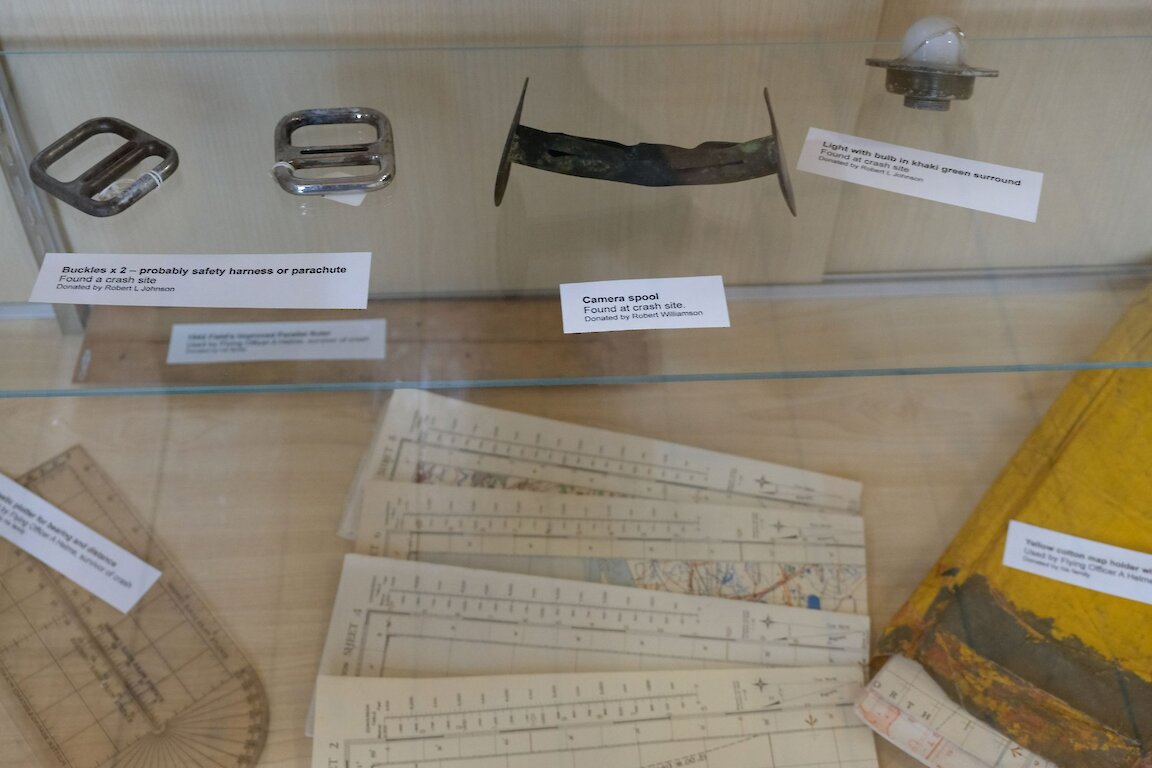- #oldhaa#oldhaamuseum#ww2#worldwar2#catalina#crash#catalinacrash#yell#shetland
- 30 March 2025
Our upstairs exhibition for 2025 commemorates the crash of Catalina Z2148 in the hill of Arisdale in January 1942 which was a cold, dark and snowy winter night . It tells of bravery, heroism, compassion and loss of life.
More commonly known as the PBY Catalina, it was officially named the Consolidated Model 28 • Wingspan 104ft (32m) • Length 64ft (19.5m) • Maximum take-off weight 35,420lb (16.1 tonnes) • Range 2,520 miles (4,060 km) • Speed 125mph (cruise), 196 mph (max) In 24th May 1941 the British battle cruiser HMS Hood was sunk by the German battleship Bismarck. This sparked a massive operation to find the Biskmarck and hunt her down. Two days later three Catalinas successfully located spotted the Bismarck off the French coast. This allowed the British to attack from air and sea. Following extensive damage, the Bismarck was scuttled on the 27th May. The second of the Catalinas to spot the Bismarck was from RAF Castle Archdale, Northern Ireland and piloted by Harry Goolden of No.240 Squadron. After the sinking of the Bismarck, attention now went to her sister ship Tirpitz. Weighting 2,000 tonnes more than Bismarck, she was the heaviest battleship ever built by a European navy. On 18th January 1942, Catalina Z2148 from RAF Castle Archdale with the Pilot Harry Goolden was sent to search for the Tirpitz off the Norwegian coast. Along the way, they stopped at RAF Invergordon to refuel, 260 miles Northeast of base. As the flying-boat flew further north, they came into strong winds, snow showers, and suffered heavy icing on the wings. After 2 hours one of the two 14-cylinder radial engines failed. With Norway being under the occupation of Nazi Germany, Pilot Goolden headed for the safety of RAF Sullom Voe, in Shetland. The crew had radioed ahead to RAF Sullom Voe and asked for a flare path to be laid to guide them to the landing strip. Unfortunately, that wasn’t done in time, so the pilot decided to circle south-east of Fetlar until the flares were in position. On the second approach to RAF Sullom Voe, the catalina continued to struggle holding its altitude, so they made a route just north of the Hill of Arisdale (the highest hill on Yell). On entering the valley of Willa-mina-hoga they hit a down draft and the plane lost what altitude it had, and struck the ground heavily at 95mph. Only 8.5miles short of safety. As the aircraft slid to a halt, breaking up as it went, the fuel tanks ignited and burst into flames. 29-year old, Flight Sergeant Dan Lockyer was the first to get clear of the wreckage, but with 1000 gallon of high-octane fuel onboard, the flames raged. However, Dan was able to pull Co-pilot Flight-Lieutenant Alexander Helme from the wreck, and roll him to relative safety. By this stage ammunition was exploding, safety flares had ignited. Then Dan noticed that the flames were licking around the depth charges held under one of the wings. So, he returned to Helme and dragged him further away. With little else that he could do, he decided to seek help and stumble his way down the hill in search of assistance. Unbeknownst to Dan,19-year old Air Gunner “Jock” Richmond was also alive. When Jock regained consciousness, he managed to free himself from the tail section which had broken off, and crawl to a relatively sheltered spot. Due to severe injuries to his leg, he was unable to go further and had to lie in wait in the hope of rescue. Dan proceeded to stumble downhill with his badly injured ankle until he reached Sundrabister and the joining of the two burns, where he fell into a deep pool, soaking him to the skin, when he was already very cold. After almost 2½ miles he finally reached a small house which happened to be the home of Brucie Henderson. By the time Dan reached Arisdale croft, home to Brucie Henderson, he was so weak, cold and wet, that he could no longer walk or stand upright. So, he could only hammer on the door at ground level. What he didn’t realise thought that an aluminium sea-marker had broken open in the crash, covering his head and shoulders in a silver powder. When Brucie opened the door, at first he didn’t see anyone, but when he looked down, he saw a wet silvery being at his feet, that resembled something from outer space! Unfazed, 50-year old Brucie took Dan in, made him comfortable, before going to raise the alarm. As it turned out the Mid Yell, Burravoe and Westsandwick Home Guard had seen the explosion and flames and were already. en route. Searching through the night to find the site some of the men walked 15 miles before the wreck site was found. Before long both Helme and Richmond were brought to safety. 7 Airmen weren’t so lucky, and lost their lives that day, and the remains were taken off the hill and buried in Hamnavoe Churchyard. A simple wooden cross was erected, with a brass plaque listing all the service men who lost their lives that day, next to their service numbers. The dedication reads: [List of airmen] Lost their lives in a flying accident on this island whilst on active service January 19, 1942 R.I.P As soon as the wooden cross was erected, a local committee was formed to take a collection for a permanent stone memorial. A total of £55 was raised, with the stone costing £52 the remainder was donated to the RAF base at Sullom Voe. On the 16th April 1944 a memorial stone was unveiled to mark the burial. A further committee formed in 1991 to raise a memorial at the crash site. On 26th June 1991, a stainless-steel Celtic Cross designed by local man Hamish Polson was erected overlooking the crash site. On the 25th August 1991 a dedication service was held at the site. Almost 200 people were in attendance from 4 years old to 87! Guests of honour were Mary Goolden (widow of the Pilot) and Dan Lockyer, survivor, who laid a wreath. Mary would later embroider a tapestry of the cross which she donated to the people of Burravoe. It is usually on display in St Magnus Church, Hamnavoe but they have kindly loaned it to Old Haa for this exhibition. Deceased Harry Goolden Position: Pilot Captain Rank : Flight Lieutenant No. : 84948 Unit : 240 Squadron DOB : 1913 Home : Chesterfield, Derbyshire, England Service : Royal Air Force Volunteer Reserve Lyle George Schell Position: Navigator Pilot Officer Rank : Air Observer No. : J5077 Unit : 240 Squadron DOB : 1918 Home : Williamsburg, Ontario, Canada Service : Royal Canadian Air Force Eugen B. J. A. Henowy Position : Wireless Operator / Air gunner Rank : Sergeant No. : 1161444 Unit : 240 Squadron DOB : Home : Service : Royal Air Force Volunteer Reserve Alan Oscar Pitcher Position: Flight engineer Rank : Sergeant No. : 610192 Unit : 240 Squadron DOB : 1919 Home : Mutford, Suffolk, England Service : Royal Air Force Volunteer Reserve Leslie Albert Rowe Position: Wireless operator / Air Gunner Rank : Sergeant No. : 755285 Unit : 240 Squadron DOB : 1919 Home : Stockwell, Lambeth, London, England Service : Royal Air Force Volunteer Reserve Albert Roland Breakspear Position : Wireless Operator / Air Gunner Rank : Sergeant No. : 1176410 Unit : 240 Squadron DOB : 1923 Home : Cumnor Hill, Oxfordshire, England Service : Royal Air Force Volunteer Reserve Sinclair Irvine Position : Flight Engineer Rank : Sergeant No. : 549930 Unit : 240 Squadron DOB : 1913 Home : Belfast, Northern Ireland Service : Royal Air Force Volunteer Reserve Survivors Alexander Helme Position : Co-pilot Rank No.: Flying Officer Unit DOB Home : Cumbria Service : Daniel Ernest Crittall Lockyer Position: Radio Operator Rank : Flight Sergeant No. Unit : : 240 Squadron DOB : 1919 Home : Poole, Dorset, England Service : Royal Air Force Volunteer Reserve Robert “Jock” Landsborough Richmond Position : Aircraftman Rank : Flight Mechanic No. : Unit : DOB : 7th August 1922 Home : Scotland Service:






